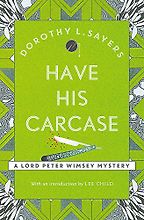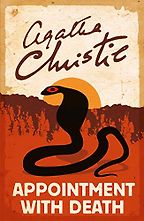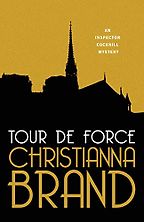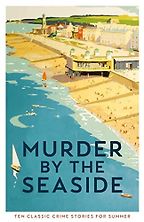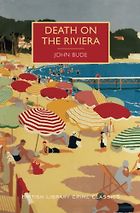Thank you for recommending five of the best summer holiday murder mystery books. Could you start us off by speaking a little about the appeal of the midsummer mystery: is it all about escapism?
It’s a little bit escapism. It’s definitely fun to read about different places and people getting out of their routines. But it also has a function in the structure of the mystery as well: you see the detective outside of their normal environment, so they don’t have the same tools and resources to draw on. And then there’s the classic ingredient—a closed circle of suspects, which can also be easier to create in a holiday setting—either it’s a resort, or an island, or on a ferry, or a train. This gives you the defined set of people who will take part in the mystery, and reduces the chance of the solution being simply a random maniac who wandered in and wandered out.
That makes perfect sense. The first summer holiday mystery book you’ve chosen to recommend is John Bude’s Death on the Riviera, published in 1952. Can you tell us about this book, and why you recommend it?
This was published slightly after the ‘Golden Age’ period of detective fiction that I normally stick to—between the two World Wars. But John Bude started out during that period and carried on in that style, even though this was published in the 1950s.
What I like about this book is that it’s a holiday mystery in the sense that a lot of it is set on the French Riviera, a popular holiday destination for well-off people, and it’s also a sort of holiday for the detectives involved, because they have been sent from Scotland Yard to pick up a suspect associated with a case that’s going on in London. They are on a bit of a jolly to the south of France, they’ve got a holiday spirit about them as well.
The crime they are there to investigate is also very much of its time, and the British Library edition does a good job of explaining it. Basically, it’s a currency racket: post-Second World War, there were all these currency protections put in place in Europe and Britain, to protect economies from massive fluctuations in the market. A counterfeiting operation, overseas, is extremely illegal on several counts. That’s what they are there to investigate.
Before we move on, I just want to pause on the British Library Crime Classics series; as you mentioned, these are classic detective stories and murder mysteries that have been republished along with new introductions. Death on the Riviera is one of them.
Yes, there are more than 100 of them now. A lot of these were books that were out of print or very, very difficult to get hold of, and mostly from that Golden Age period between the two World Wars. This series has brought back into easy accessibility lots and lots of writers who otherwise weren’t getting read. And they’ve had some interesting surprise bestsellers!
What’s good about the collection is that the books have been chosen for their quality, so if one appears in the series, you can be fairly sure it’ll be a good one. If a writer has published 30 books, and they’ve picked five, they’ve picked those ones for a reason.
They all come with an introduction that offers some context about the writer and some key social history of the period as well—stuff like the currency racket in Death on the Riviera has all been explained nicely before you actually plunge into the mystery and get confused.
Wonderful. Let’s move onto your second choice, Dorothy L. Sayers’ Have His Carcase, a murder mystery book set during a summer walking holiday. Tell us about it.
This is one of her Lord Peter Wimsey/Harriet Vane stories, which is a sub-series within her work. All of Sayers’ mysteries feature Wimsey, but starting with 1930’s Strong Poison, she wrote books featuring Harriet Vane, who acts as his sparring partner and—spoiler—eventual wife.
In Strong Poison, Harriet is a detective novelist on trial for murder. She has been researching methods of murder for a book she’s writing, and ends up accused of the murder of her ex-lover. Wimsey investigates and eventually extricates her from that situation. In this book, she’s trying to get away from it all after having been at the centre of that terrible media maelstrom and the court case. She’s taken herself off on a solo walking tour of the south coast of England. She wants to get away from murder, death, the press, everything. She stops to have her lunch on a beach one day when she’s walking, and she sees a rock out in the low tide zone, and is a bit confused by what she sees. She goes to investigate, and finds a man lying dead on the rock with his throat cut.
It is a locked room or impossible crime mystery in as much as she was sitting there the whole time, she could see the whole beach, and no one approached either by sea or by land. Yet here is this man lying there, still warm, blood still flowing. It’s impossible. How can it happen?
“The classic ingredient—a closed circle of suspects—can be easier to create in a holiday setting”
It all unfolds from there, really. She walks to the nearest town to tell the police. And because she is eminently practical, she realises this is going to be a huge story: detective novelist just cleared of murder discovers newly-murdered man. She calls the papers herself and sells the story—she can at least profit from it. Then Lord Peter Wimsey turns up to help investigate what has happened.
The title, in true Dorothy L. Sayers fashion, is an obscure reference to the writ of habeas corpus, which says that you can only hold an inquest for a body if the body is present. If there’s no body there, you can’t proceed with the prosecution of a crime. The tide has come in and gone out again, taking the body with it. If Harriet hadn’t been there to take notes and photographs—because she had her little camera with her for her holiday—the police probably wouldn’t even have believed anything had happened. Most of the novel takes place in this interim period, where they can’t find a body but know that a murder has been committed.
Tell us a bit more about Sayers. Was she quite prolific?
Not really, compared with the likes of Agatha Christie, or Ngaio Marsh. I think she wrote 15 books in total, starting in the early 1920s and finishing, I think, in 1937. Then she completely pivoted away from detective fiction, and had two subsequent careers. She got very involved with religious writing during the war—she was an ardent Anglican—and she did a lot of broadcasting for the BBC on the subject. Then, after the war, she got very involved in translation. She started and nearly completed what was, for most of the 20th century, a very highly thought of translation of Dante’s Divine Comedy. She remained a fan of detective fiction and a critic, but didn’t publish any of her own novels after the late 1930s. She died in 1957.
Wow, what an interesting career. Your next summer mystery book choice is an Agatha Christie book: Appointment with Death, published in 1938.
Agatha Christie has a couple of really famous overseas mysteries featuring Hercule Poirot—Death on the Nile being one, and the other being Murder on the Orient Express, which isn’t set in summer but it’s still a holiday mystery. I’ve never been able to understand why Appointment with Death isn’t up there with those two, because it also features Hercule Poirot, and he’s on holiday—this time in Petra in Jordan, where he has gone on a sightseeing tour to the famous monuments with a party of other tourists. He doesn’t know them.
It’s a perfect closed circle, because the archaeological site is sort of inaccessible, unless you come with guides. Once you’re there, it’s hard to leave—I think it’s just in the desert, so you couldn’t just walk off on your own.
Get the weekly Five Books newsletter
A very unpleasant woman, a matriarch of a family, is there with several of her children and her spouses. They all have to kowtow to her. She’s very cantankerous. Later, she’s found dead, and there are only a handful of people in the valley who could have done it. Hercule Poirot happens to be there, he investigates, and so on.
It’s a great set-up for a mystery that draws directly from Christie’s own experience of travelling in the Middle East. She was very familiar with that area, so the setting is very precise and well described, you really feel like you are there. And there’s this undercurrent of evil; she’s exploring the idea of how a disturbed and disturbing personality in a family can trickle down the generations. This woman who’s been murdered is truly horrible. She’s really done a number on her children. All together, this makes for a great mystery and it deserves to be more widely known.
The murder in this story happens surprisingly late on. Is it unusual for a mystery writer to step out of the normal structure for a detective story?
You do get that sometimes. I think, as the genre developed, people began experimenting and playing with it. The idea that the corpse should be discovered in the very first chapter, then the detective should enter, and the solution is delivered at the end—they started pulling that apart and playing with it.
For instance, there’s a later Agatha Christie, also a Hercule Poirot novel, called Cat Among the Pigeons, in which Poirot is not even mentioned until at least three-quarters of the way through the book. It’s a novel featuring entirely original characters until that point, and again, I think that’s Christie playing with the form, having a bit of fun.
Five Books interviews are expensive to produce. If you're enjoying this interview, please support us by donating a small amount.
Also, later on in her career, she was a bit tired of writing Poirot novels, but the publisher still wanted and needed her to keep doing that. She started finding interesting ways to meet that requirement whilst also doing what she wanted to do.
I think, in Appointment with Death, the reason the death comes later is because you need lots of chapters with the woman alive to understand the effect that she’s had on people, and to build up the possible motives. And it sets up the ethical question of the book as well, which is: is it truly a sin to have killed someone who has done so much harm?
Interesting. Shall we talk about Tour de Force by Christianna Brand? This is a 1955 murder mystery novel featuring her police detective Inspector Cockrill.
Christianna Brand is probably better known these days as the author of the Nurse Matilda books, the template for Nanny McPhee. But Brand was an established crime writer, and an early member of the Crime Writers Association, who wrote a whole series of novels featuring Inspector Cockrill. I have to say, Cockrill is a blank slate as a detective, he doesn’t have the character or eccentricities of Poirot or Miss Marple, but he’s perfectly pleasant to read about. Her books are more interesting for the actual plot mechanism, and sometimes the setting, than for the character.
In this one, he’s on holiday, on an island in the Mediterranean off the coast of Italy. It’s left deliberately vague which one. In classic summer holiday mystery fashion, a murder is committed among the resort group that he’s in, and the interesting twist is that he’s initially the suspect when the local police start investigating the crime. He’s right there, he has the means and the motive—so part of the reason that he jacks in his holiday and starts investigating is because he needs to prove that he didn’t do it. Then, of course, it becomes an interesting investigation in its own right.
I can see the ingredients of what you outlined in the beginning: the closed circle of suspects, the glamorous location, the fish-out-of-water detective.
He’s also a very reluctant holidaymaker. He didn’t want to go in the first place, so that all adds to the drama: he didn’t want to go, then he ends up being involved in a murder investigation, potentially being framed as the suspect. You are supposed to feel for him. Nothing has quite gone to plan.
Your final choice is more of a morsel. It’s a short mystery story from the anthology Murder by the Seaside: Classic Crime Stories for Summer called ‘Superintendent Wilson’s Holiday’ by GDH Cole and M Cole. Tell us about it.
This is quite a short, short story, and—a bit like Brand’s Inspector Cockrill—the Coles’ Superintendent Wilson is a fairly colourless Scotland Yard detective who appears in most of their mysteries. He’s fairly senior, he’s reluctant to leave his post, he’s been dragged on holiday. It’s best read as an introduction to the Coles’ work rather than in its own right.
The Coles are really interesting. Margaret Cole was a famous socialist and founding member of the Fabian Society, so is principally known as a woman on the left in the early 20th century. Her husband was a historian, a leftist historian, who was very well known for his histories of the working class. But they cottoned on to the commercial potential of detective fiction very early on, and started publishing about a book a year for quite a long period, because it was a reliable source of money. Much more reliable than, you know, leftist writing.
They wrote the books together. Supposedly the way they did it was that one of them would draft and the other edit, and they would take turns. I’ve seen people positing theories of who actually wrote each one. So I don’t know who was responsible for ‘Superintendent Wilson’s Holiday’. But everything came out under their joint names.
Get the weekly Five Books newsletter
Do you recommend the anthology more generally?
Yes. It’s part of a whole series put out by Profile Books. There are several set around Christmas, a wintry one, and another called Murder in Midsummer also full of mysteries set over summer holidays.
The Coles are mostly out of print, and have yet to be rescued by the likes of the British Library, so it’s rare to find them easily in a bookshop rather than having to stalk eBay for an overpriced old copy.
And finally, to round off the discussion, what mystery books are you planning to read on your own summer break this year?
I’m going to be reading a lot of the work of R. Austin Freeman for an upcoming episode of my podcast Shedunnit. He was a slightly pre-Golden Age writer, writing most of his great mysteries in the 1910s. He was, if not the inventor of the ‘how-dunnit’, then the populariser of it. That’s when the main engine of the plot is not discovering who committed the crime, as in a ‘whodunnit’ but how they did it and how they—nearly!—got away with it.
Interview by Cal Flyn, Deputy Editor
July 11, 2022. Updated: July 25, 2022
Five Books aims to keep its book recommendations and interviews up to date. If you are the interviewee and would like to update your choice of books (or even just what you say about them) please email us at [email protected]



